Table of Contents:
- Introduction to the Ford 10R80 Transmission
- In this Drivetrain 101, we will be addressing
- Ford 10R80 Product Resources
- Popular Transmission Information Resources
- A Brief History of the 10R80 Transmission
- How the 10R80 Clutch Packs Work
- Problem #1 - The Torque Converter
- Problem #2 - The Valve Body
- Problem #3 - The Oil Pump
- Problem #4 - The "E" Clutch Assembly
- Problem #5 - The Oil Pan
- Problem #6 - The "B" Clutch Assembly
- Problem #7 - The C-D-F Drum Assembly
- Frequently Asked Questions about the 10 Speed Ford 10R80 Transmission
- Conclusion to the Ford 10R80 Transmission
Introduction to the Ford 10R80 Transmission:
As the company designing most of the Ford 10-Speed transmission upgrades, we often are approached with question after question about this highly complicated transmission; ranging from what fails to why and how. Fortunately, we've fulfilled this demand with an installment in our popular Drivetrain 101 series.
It should be noted that this transmission is the fraternal twin to the General Motors (GM) 10L80-E and 10L90-E transmission, fitted to the corresponding years of General Motors passenger vehicles. This product was engineered as a joint venture between Ford and GM. They are slightly different, in that GM owns multiple intellectual property items that they've implemented to their version of this transmission, as did Ford. Because of this, they are not identical.
Our goal is to educate, inform and support the Ford 10-Speed market with high quality data and facts about their transmission. As transmissions and vehicles in general become ever more complicated, it's important to educate yourself on how these mechanisms operate. If you want to become an expert on the 10R80 transmission, this Drivetrain 101 is for you!
In this Drivetrain 101, we will be addressing:
- The most popular failures we witness on the 10R80 transmission
- Ways to get the most out of your transmission
- The strengths (believe it or not, there are a few!) of this transmission
- Resources for relevant updates and upgrades
And much, much more!
Ford 10R80 Product Resources:
- 10R80 Transmissions
- 10R80 Torque Converters
- 10R80 Rebuild Kits
- 10R80 Valve Bodies
- 10R80 Parts
Popular Transmission Information Resources:
- Top 5 Benefits of an Upgraded or Built Transmission
- Calculating Torque Multiplication Factor, Why is it So Important?
- Top 5 Ways to Extend the Life of a Factory Transmission
A Brief History of the 10R80 Transmission:
Prior to 2017, the bulk of RWD and AWD Ford passenger vehicles came with the respectable 6R80 Transmission. Unfortunately, as the ferocity of these motors increases, the 6R80 transmission quickly became ill equipped for the job. Because of this, Ford (and GM) had to pursue a new option. Due to their massive capital reserve, Ford was able to engineer their own transmission just as they did with it's predecessor.
After years of research and development, out came the 10R80 transmission. The new 10 Speed is able to hold some more power, using more robust components internally. Additionally, it is designed to keep the motor inside a narrow operating range to favor efficiency. 10 Speed transmissions, in general, largely just exist as an appeasement to the EPA. It could easily be argued that a stronger 6R80 would have easily sufficed.
At this time, there is no foreseeable successor to the 10R80 transmission, it is likely to stay with us for the next few years. But, despite it's various enhancements over it's predecessor, the 10R80 transmission is not perfect. In fact, many people experience a rapid decline in transmission health with so little as 33" tires (sorry Raptor guys), nevermind removing emissions components or using a tuner (sorry Mustang folks too). Although we love power as much as you do, we must be sober about the fact that power leads to broken transmissions much sooner. Fortunately, we will discuss how to resolve this later in the study.
How the 10R80 Clutch Packs Work:
Like nearly all electronic transmissions, the 10R80 transmission uses a shift map using various factors such as engine load and accelerometer input to calculate shift decisions without your input. Very similar to it's GM counterpart, the 10R80 uses a form of adaptive shift protocol to optimize for smooth shifts. The onboard computer is constantly trying to advance or delay solenoid activation to support this goal. Sound complicated? It is.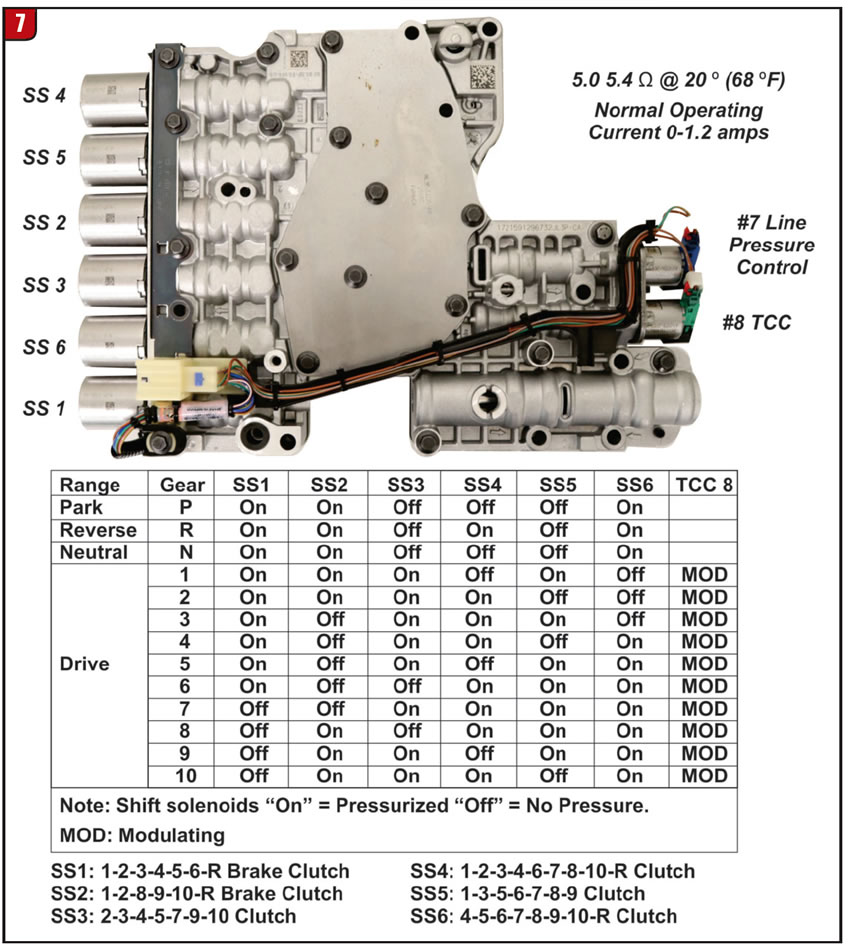
Here, we can see a solenoid application chart. As one could see, there are MANY different solenoids in this transmission, all designed to operate in a complex and cohesive fashion. Naturally, this intensely complicated system can be prone to prolific electrical issues as well as valve bore wear issues, largely because of how many of them there are. Many clients report clunky, poorly timed or "confused" shift behavior as these problems present.
As a clutch to clutch style transmission, this means that the 10R140 does not use any bands, servos, levers, anchors or struts to activate any of it's functions. This is not necessarily a benefit or a drawback, but rather just a useful piece of information. Band & Servo style units were discontinued years ago due to their general inability to be electronically controlled. As we have all seen over the past years, OEM's are eager to electronically control transmissions. Now that we've learned about these foundational facts, we can analyze the problems of the 10R80 transmission and how to resolve them.
Problem #1 - The Torque Converter
Similar to the GM transmission, the OEM torque converter is very unreliable as a result of it's non-flat friction surface and embarrassing stator assembly. Fortunately, the impeller hub, which is the piece that splines into the oil pump, is massive and very unlikely to break. Granted, it's not invincible, it's just stronger than many historical converters manufactured by Ford. We do offer a billet CNC machined hub on our torque converters, so this concern is nil with our product.
More prolifically, the converter clutch fatigues, flexes and burn over time. They're quite fine on day one, but notorious for longevity issues. It's extremely different to the 6R80 in terms of the torque converter lockup clutches and how they work. To some consolation, the 10R80 is a line pressure monster, producing ample pressure to hold the clutches together assuming no other collateral failures take place.
Additionally, the OEM stator, the component responsible for controlling stall speed, is absurdly thin and flimsy. This was designed this way to conserve costs in mass production, something that seldom if ever benefits the end user, you. All of our 10R80 converters feature a billet stator, revoking this concern from our valued clientele.
Lastly, and as a collateral effect of the stator, the OEM converter escalates average operating temperature (AOT) by a considerable margin because the large allowable difference in speed between the motor side and the input shaft side of the converter is so immense. This generates huge amounts of thermokinetic energy, a chemical reaction producing heat. Heat is a silent killer in the transmission world, and detracts from the longevity of any transmission.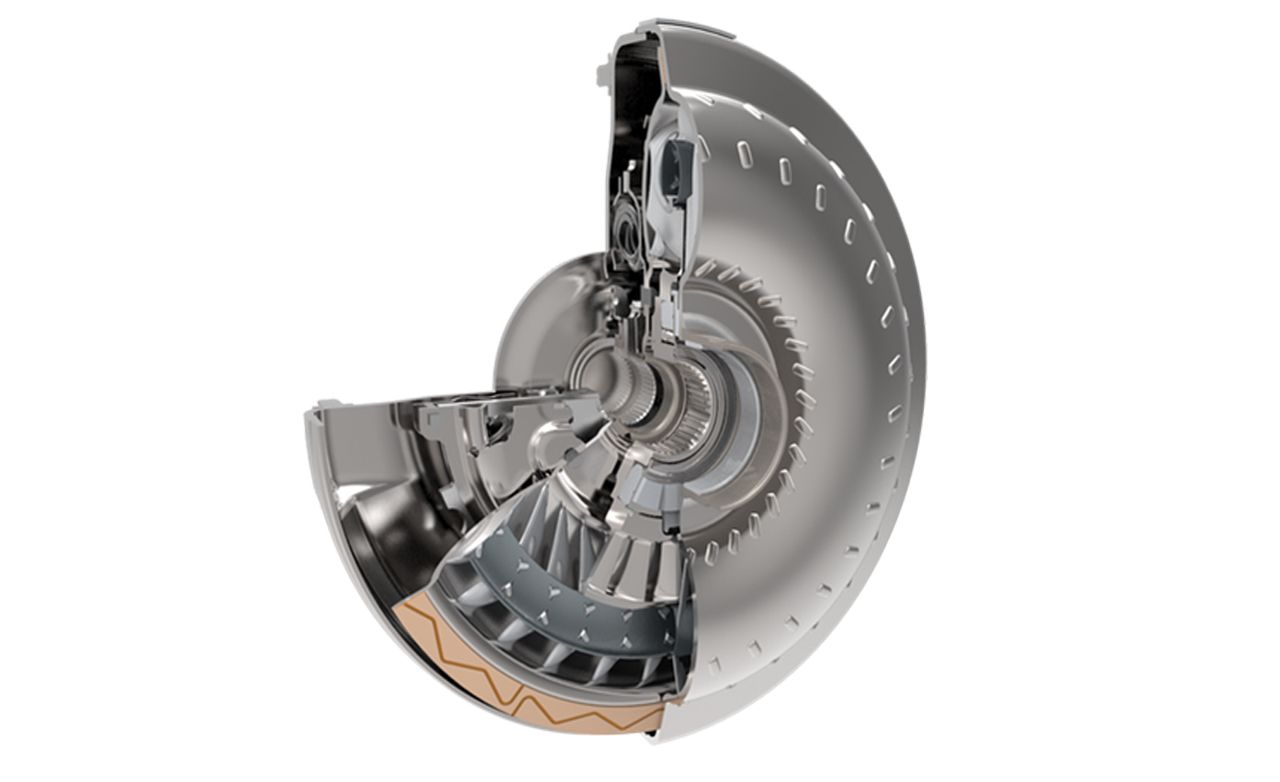
Problem #2 - The Valve Body
As with many transmissions, the 10R80 transmission's valve body is a huge cause of it's demise. Valve bodies are naturally complicated hydromechanical mechanisms with a huge concentration of moving parts and electronics. This makes them probable targets for internal crossleakage, solenoid failure and other similar problems that are notorious for cooking transmissions to death.
Firstly is the pressure solenoids inside the valve body. There are many of them as nearly all functions of this transmission are controlled by a switch or solenoid. As with most mechanisms, more moving parts means more things that can break. Generally, these solenoids are reliable, however they are often victimized by internal crossleakage inside the valve body that puts undue stress on the electronics by trying to push them on when the onboard computer believes they should be closed, or vice versa.
Additionally, the valvetrain inside the valve body is quite abundant, featuring dozens of moving parts. Every valve is a potential leakpoint. This would not be of concern if the transmission's valve body featured steel valves or anodized protective layers on the exterior of said valves, but unfortunately they are not. The valves are manufactured out of a low cost aluminum alloy designed to minimize cost at volume, leaving them susceptible to bore wear over time.
Further, the separator plate inside the valve body does not favor fast and efficient shifts. In fact, the separator plate contributes to many "sloppy" shifts by featuring unfavorable oil geometry when oil is trying to reach oncoming clutch packs. We expedite oil flow into oncoming clutches by making substantial modification to the OEM separator plate. To be fair, the OEM separator plate is rather thick and difficult to flex, but is inferior in other ways as mentioned. This makes modification of the OEM plate the most favorable way to ensure reliability as well as peak operability.
Problem #3 - The Oil Pump
Much akin to the GM 10L80-E & 10L90-E transmissions is the 10R80 transmission's oil pump. The high pressure oil pump inside this transmission is incredibly complicated for no visible reason. It features dynamic veins and a rotating wheel driven by a steel gear with it's own filter. This design is generally reliable but requires abundant filtration to maintain said reliability, making regular service important.
In terms of failure, the OEM transmission tends to shed a large amount of friction material over time due to the low quality friction elements used from the factory and the intense amounts of clutch drag they suffer from due to their slow engagement and sloppy shifts. This naturally exacerbates and accelerates the wear issue of the OEM oil pump in unmodified 10R80 transmissions.
In addition to this, the 10R80 oil pump is notorious for losing oil pressure at the top end as this problem begins. This causes the transmission to shift erratically or sloppily under full throttle or with loads being towed. There beyond, these transmissions rely on oil pressure to calculate their shift behavior, contributing to tremendous confusion of the onboard computer whilst adapting to your driving patterns. This is one of many reasons the factory 10R80 transmission's shift strategy is so unpredictable.
Problem #4 - The "E" Clutch Assembly
As the commonalities amongst the GM 10L80-E & 10L90-E and the Ford 10R80 transmissions grow, we must mention the "E" clutch assembly. Although this clutch assembly does not have the highest torque multiplication factor, it does have a rather high one as it is used in most overdriven gears. The reason it is so quick to fail is because of a combination of this and the fact that the clutches are rather small in surface area.
Similar to the reason a car's smaller rear brakes do not provide as much stopping power as the larger front brakes, small friction plates offer less synchronization power than large ones. As a result, the "E" clutch assembly is disadvantaged from the factory. Granted, the OEM is not incentivized to provide over-built transmissions to the consumer, but rather transmissions that are low cost to produce and generally sufficient to see customers to the end of their warranty period providing they do not modify or overuse the vehicle.
Fortunately, we use a host of modifications to the valve body to enhance oil pressure to the "E" clutches as well as modify the separator plate to bring these clutches on much faster. The decrease in synchronization time enhances both shift quality AND longevity. It is unfortunate that the OEM did not care to provide benefits like this to the consumer.
Problem #5 - The Oil Pan
As an expensive 10 speed transmission, it is exceptionally important to maintain low oil temperatures to preserve the longevity of the transmission. From the factory, the OEM saves money by stamping the oil pan out of thin plastic using a mold and a special tool to provide accurate shape. This is never optimal, but certainly does not endorse a healthy transmission for heavy duty applications or long term use.
In fact, the OEM oil pan is so lacking in volume that a variety of transmission pan manufactures have added in excess of a gallon to the oil volume of this transmission. Due to the obvious nature of this upgrade, it is standard on ALL Next Gen Drivetrain 10R80 transmissions to contain a cast aluminum deep pan. Expect cooler AOT (average operating temperature) with our built 10R80 transmissions.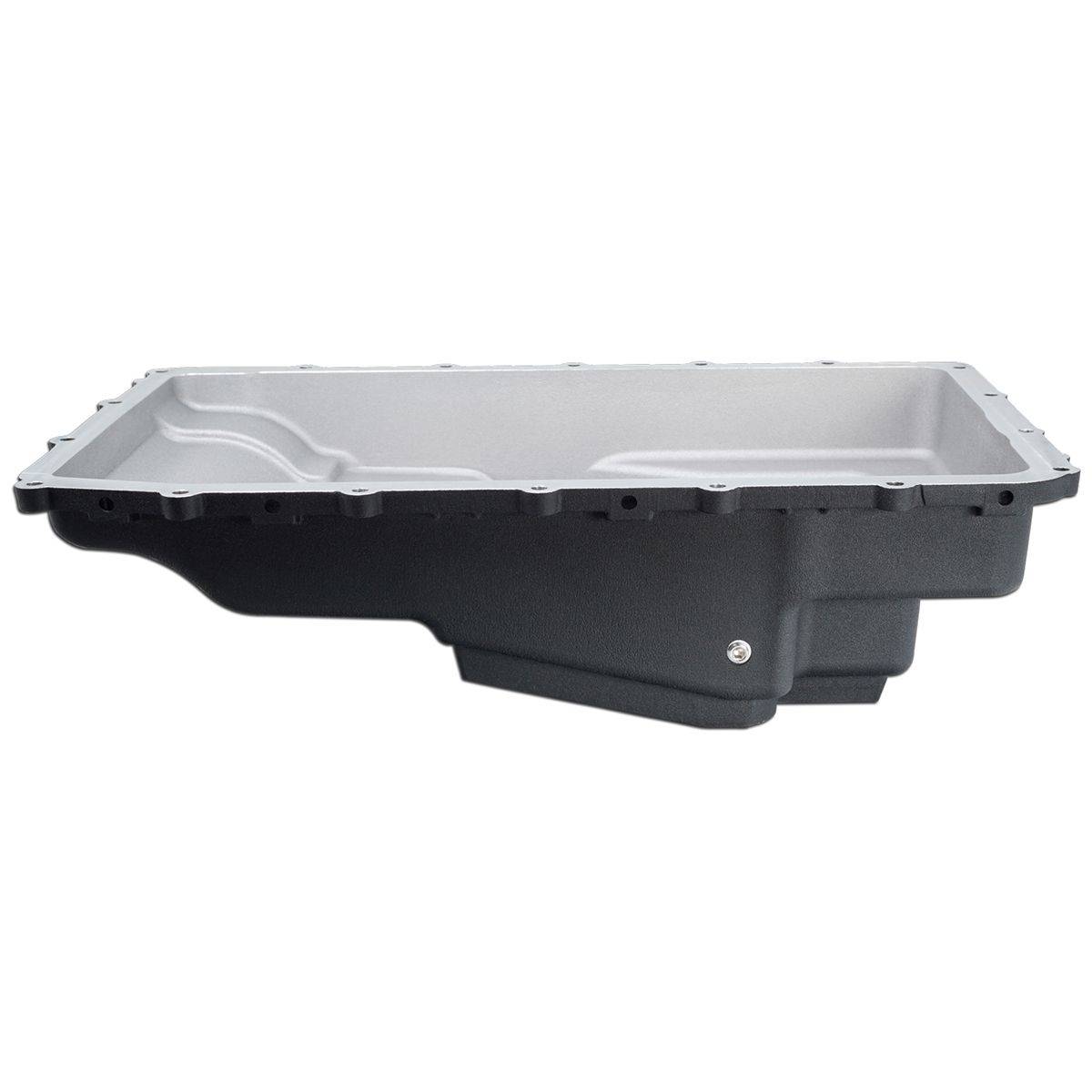
Another lost benefit when operating with an OEM oil pan is the lack of structural support to the case. Cast aluminum deep pans function as a "girdle" that supports the case to prevent flexion, greatly decreasing the potential for a broken case. Although broken cases are not very common to this transmission, it does exist and should be noted. A cast aluminum deep pan virtually eliminates this concern.
Problem #6 - The "B" Clutch Assembly
As the clutch pack active for 8th, 9th and 10th gear, the "B" clutch assembly features the greatest torque multiplication factor of any clutch pack inside the 10R80 transmission in most conditions. Much as the "E" clutch assembly suffers from inadequate apply pressure and inadequate oil feed rates, so does the "B" clutch assembly.
The "B" clutches are intermediate in size and would certainly be successful with access to better shift strategy and oil geometry, but unfortunately, the OEM does not provide this. The oil feed orifice inside the OEM separator plate is physically larger in Next Gen 10R80 transmissions, giving this clutch pack a far better chance at life.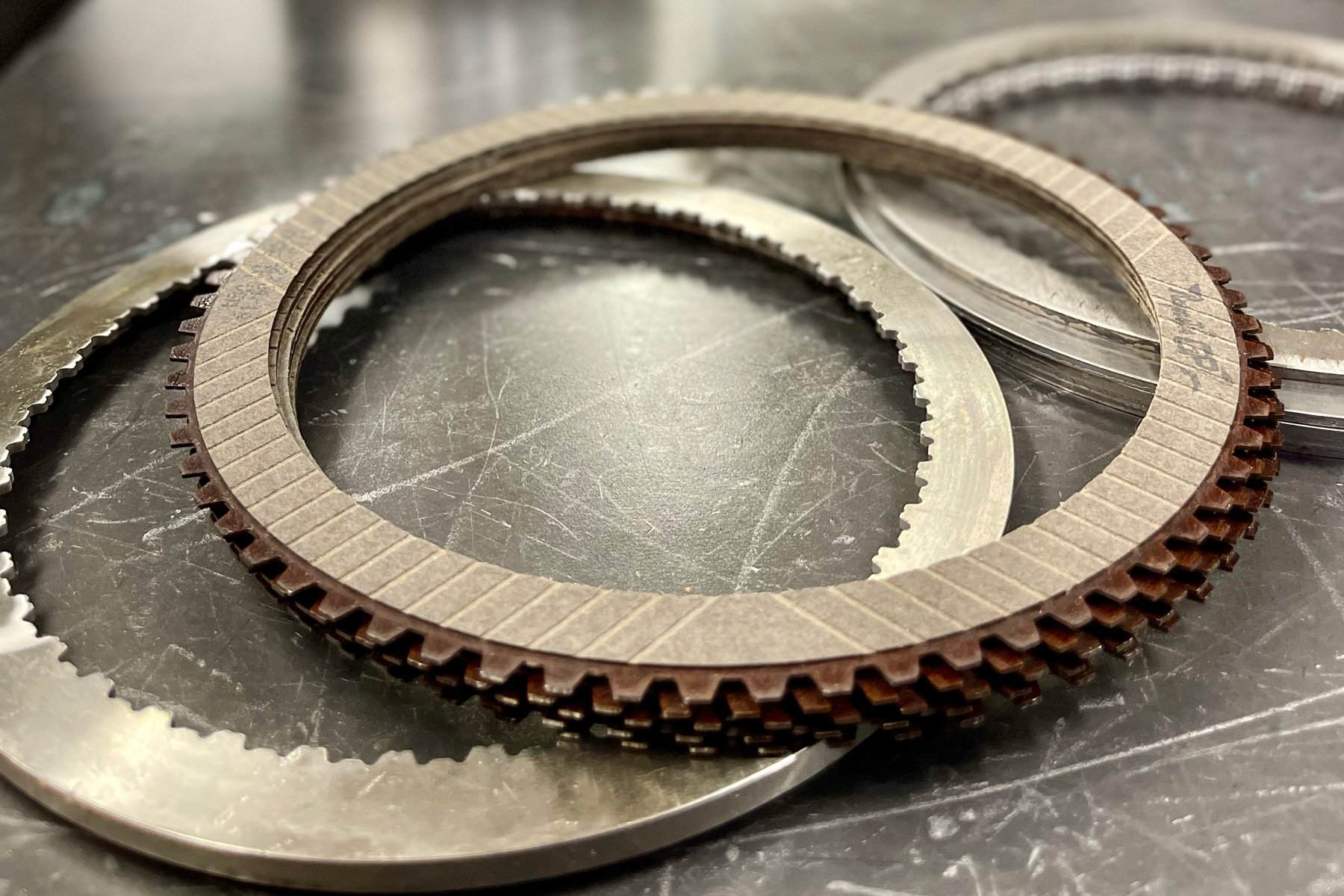
To augment these efforts, the pressure regulator valve spring is also changed to require greater oil pressure before venting. This means more oil reaches the clutch pack, in a more timely fashion, tendering the support necessary for this transmission to endure the use of a more powerful or heavily used vehicle. Although all clutch packs are enhanced in some way in our product, it is important to highlight clutch packs such as "B" which are exceptionally at risk.
Problem #7 - The C-D-F Drum Assembly
Perhaps the most common problem we encounter, tied with valve body failure, is the bushing of the C-D-F drum assembly being forced out of place by excessive heat and pressure. This deprives half of the transmission of fluid pressure, causing near instantaneous failure. This problem is exacerbated by large tires, added power, frequent towing and many other things, although not partaking in these activities does not save you either.
We are proud to say that we resolved this issue almost immediately the same way we did in the smaller 10R80 Transmission. There are 2 necessary solutions to prevent this problem, both of which are standard in all 10R140 transmissions we offer.
Firsly, we increase the lubrication pressure in this valve body, the oil used to keep the transmissions inner workings cool, by 300%. This helps regulate the extraordinary heat that causes this bushing to travel in the first place. Secondarily, we machine a lip into the C-D-F drum assembly to keep the bushing in place regardless of circumstance. This problem has NEVER been recorded in a Next Gen Drivetrain product.
Frequently Asked Questions about the 10 Speed Ford 10R80 Transmission:
Q: Is the Ford 10R80 a good transmission?
A: Known as a less-than-reliable unit, the 10 Speed Ford 10R80 transmission is a fertile breeding ground for a variety of problems. This includes but is not limited to: Valve body crossleakage, burnt clutches, damaged clutch hubs, stripped shells and much more.
Q: Is there TCM Tuning for the 10 Speed Ford 10R80 transmission?
A: Yes! The 10 Speed Ford 10R80 can be easily tuned to request different shift points, different lockup protocol and various other functional changes. However, most of these parameters do not need to change for the transmission to work optimally. Mechanical upgrades are significantly more important.
Q: What is the lifespan of a 10 Speed Ford 10R80 Transmission?
A: Although there are many variables, the 10 Speed Ford 10R80 transmission lasts an average of 100,000 to 150,000 miles in unmodified trucks with average applications. Trucks with larger tires, tuning, emissions delete systems and other aggravating factors usually fail much sooner. Transmissions with religious maintenance routines that are used largely for highway miles can last longer in some cases.
Q: What is the best upgrade for a 10 Speed Ford 10R80 transmission?
A: The single most important upgrade someone can perform on a 10 Speed Ford 10R80 transmission is a valve body. The valve body is where the overwhelming majority of their problems begin, and can yield huge benefits to any application. All Ford 10R80 transmissions, regardless of application, should have one of our upgraded valve bodies.
Q: What are the service intervals of a 10 Speed Ford 10R80 transmission?
A: It is our advice that this transmission is hot-flushed and a complete fluid and filter change is executed every 25,000 miles on average. Extraordinary applications may want to perform these services more frequently, whereas highway exclusive applications can safely push a bit further between services.
As one could see, the 10R80 transmission is lacking in mechanical and hydraulic quality. This transmission was never meant to be a "premium" option, but rather a high volume, economical option that favors EPA regulation. Fortunately, Next Gen has been adamant about bridging the gap between this naturally inferior transmission, and it's potential for tremendous success and reliability. Have questions about the 10R80 transmission? Call in and speak to one of our experts today!

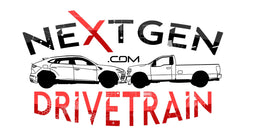





Comments (37)
I am 2018 Ford king ranch with a 75,809 miles. I had a catastrophic failure of the transmission subsequently the dealer had charged me $1080 for the diagnostic. The transmission had nothing but filings within the transmission pan and filter despite telling the service manager the amount of problems that this 10 R80 the service manger, said that I would have to contact with Ford motor company. I contacted the attorney generals office of the state of Pennsylvania consumer affairs, division, and filed a complaint. Additionally, I contacted the national Highway traffic, safety administration, office of defective parts. Additionally, I filed a complaint with the Better Business Bureau and the US Attorney General, who was investigating a Ford for interfering and national Highway, traffic administration and safety agencies investigation on the transmission plagued with problems during pre-production. They try to interfere with the national Highway traffic safety administration’s investigation. Additionally, I contacted the Better Business Bureau and federal trade commission Ford new in 2017 that they were having problems with this transmission there was a number of internal emails by engineers and the pre-production of this transmission and the catastrophic failures between the areas of 2017 and 2020. They have had nothing but problems with this transmission, additionally the $8000 replacement cost is catastrophic to most people. Ford gave me a complaint. Number said that they were doing a follow up with me. The attorney generals office for the state of Pennsylvania had contacted Ford and the dealership you can Google the 10 R80 transmission class action suits which are occurring in at least 11 states. The dealer also knew about this failure between Ford and the dealer there was trainee service bulletins, put out and reference to what they believed was a computer malfunction in the TCU communicating with the ECU. That wasn’t the case here the filings that are contained within the engine oil, pan or find like sand. Additionally, after doing research a number of individuals that rebuild these transmissions indicate bearing within the transmission that tends to fail and warped, the transmission shaft, causing it to wobble out of control. I’m still waiting on an answer from Ford. The customer service rep said she was waiting on a supervisor to grant me the coverage on the transmission replacement, but I haven’t heard anything yet , I enjoyed the truck, and had all the luxury that you could ever imagine but the catastrophic failure of this transmission is devastated me and it will be the last time I ever buy a Ford product again
I have a 2022 f150 with the 3.5 Eco bust. The truck will produce a vibration and harmonics that can be felt in my legs and heard in my ears. This occurs when the truck shifts into overdrive in gears 8, 9, and 10. The issues is coming when the rpm’s are from 1500 to 1200. This vibration and harmonics also occurs when I ease into the throttle. Any ideas as to what is going on or how this can be corrected. The Ford dealer told me that this is just how this transmission is and there is nothing they can do.
Hey, I have a 2018 Ford F150 king ranch I have had a catastrophic failure of my transmission I have to bring it to the dealership or I was charged $1080 for the diagnostic. They said that I needed to replace the transmission which was $8000, upon doing for the research I had seen how many class action suits had been filed against Ford motor company concerning these faulty transmissions. This article is excellent and I plan to forward it to the attorney generals office of consumer affairs for the state of Pennsylvania, a national traffic highway and safety administration Federal trade commission and the Better Business Bureau these 1080 r transmissions are simply a hazard to the general public, the operators of the vehicle in the occupants of the vehicle. I had to catastrophic failure and had to pull off a major on ramp to a highway. I lost complete power in a vehicle, refused to start, or I had to abandon it along side of the road Ford was aware of these problems as early as April 2018. I purchased my truck in September 2018 in October 2018 another technical service bulletin was issued concerning the transmissions. Simply Ford is failed to acknowledge these failures in their 1080 R transmissions. This article sheds so much light on the areas of failure. I’m hoping that the national Highway traffic safety administration office of defective parts receives this in-depth analysis of failures and afford them the opportunity to invoke recalls on these expensive transmissions. Not only do you go without your vehicle for several weeks, but the financial hardship of the cost of that transmission is astronomical. unfortunately Ford is now investing in there lightning big trucks so I don’t see, any relief coming in the way of replacement or repair of these transmissions by Ford it’s my hope after to pursue Ford in a class action suit they were aware of the problem prior to showing me the vehicle. They were aware of the problem throughout 2018 2019 2000 2221, but the dealers continue to sell these defective vehicles, knowing that catastrophic failure could occur to these transmissions that in itself is fraud, unjust gains through fraud as another crime. There are seven or other criminal elements that Ford and it’s administrators could be held liable, for they were a number of internal correspondence and pre-production about the failures of these transmissions. The dealerships that have replaced these transmissions are in denial but yet they have a history of all the repairs that they have made to this 1080 R transmission and that there’s a paper trail because of the fraudulent activity by Ford that they buy my vehicle back. Simply I would not have bought it and I had known that they were having issues with the transmission. I would also ask you to look at the other recall items on that particular vehicle if you own one, it’s a nightmare and I hope that there’s a positive outcome of it. Meanwhile, I’m without transportation.
My vehicle was purchased new .truck worked well for awhile then random shifts and very hard shifts .I bought this truck to tow my trailer afew times a year . I’m worried now because it slippes or shudders horribly when towing. I’ve taken it in twice ,first time they did a flash and that has helped just not while towing second time said it’s fine and charged me . Stealer said bring your trailer and leave it. I’m 50 miles one way from the stealership
Will never buy a ford pickup again. Will rent a pickup from Home Depot from now on. Am spreading word about 10r80 transmission. GM used them too so I’m done with them also. All transmissions seem to have issues. Heard bad things about cvt trannys, but even they out perform 10r80. Very disgusted with car manufacturers. They are losing customers & confidence. Who wants to take a family on vacation in these unreliable junk traps, only to ruin their vacation.
2018 F150 crew cab 62000 miles. Ive had a couple of hard up shifts. and one slip were truck took a 1/2 sec to shift into gear. What is the fix for that?
I’ve been having the same issues with it shifting hard and delayed shifting. When trying to pass traffic it drops hard back in to lower gear(s)
Took it in again and now there’s a bulletin fix.
Hopefully they fix the 30 plus parts they have to inspect
I have a 2020 Ford Expy Max with the 3.5 and 10R80. Trans was smooth as butter when we first bought it but started kicking like a mule on upshifts and downshifts during transitions from 3rd-4th (vice versa) and sometimes skips from 5th to 3rd on rapid decelerations. I’ve been researching it for a while now and it appears everyone has the same problem but multiple fixes so I’m walking the dog on ours. Took it back to the dealer today and re-flashed the “driving learning” feature and so far, that has helped. Will it last? We’ll see. If I see a return of it, I’m just going to trade it in for another make. This is my second Ford and due to us having 4 kids, we’re a bit stuck since there aren’t a lot of non-minivan options out there for large families. It’s a shame as we’ve had some electrical issues, too (shifts into neutral a few times when sitting at a light AND has shut the car off twice so far waiting at lights). For the profit margin Ford makes on these things, you’d think they’d be more reliable.
Great article. At 83k miles my 2020 Expedition Max start kicking into neutral at mid to high speeds while passing – very dangerous. Dealer had it for 3 weeks and while driving home trans kick out again. Dealer finally got me back in 3 months later and had my vehicle for 6 weeks. Fortunately they gave me a loaner the 2nd time. Not exactly sure what they rebuilt but vehicle has been shifting great now for the past 6 months. Dumb question but does anyone have an idea how reliable rebuilt 10R80 transmissions are?
I have a 2018 F150 FX4 crewcab and in less than 24500 miles the trans locked up going through a intersection almost causing a wreck, it then released and I couldn’t drive over 10 mph then nothing for a couple hundred feet then again. I was close to the house and called ford. They literally had me drive it to them. I ended up having the entire trans rebuilt and when they test drove to make sure irt was all good, the teeth on the gears broke off causeing more damage. after almost a month I got a entirly rebuilt trans and my truck back now 1750 miles later my oil pump is out and back in the shop getting replaced. It is amazing that ford takes the low road and saves themselves money while screwing the customers with know defects because of recall cost! I will NOT buy another ford! My truck has 25323 miles and has never been driven hard and now I just hope it will last before it has another major repair needing done cause the next thing if it has to go back in is a new trans completely or it will sit in front their lot with a sign on it saying dont buy ford!